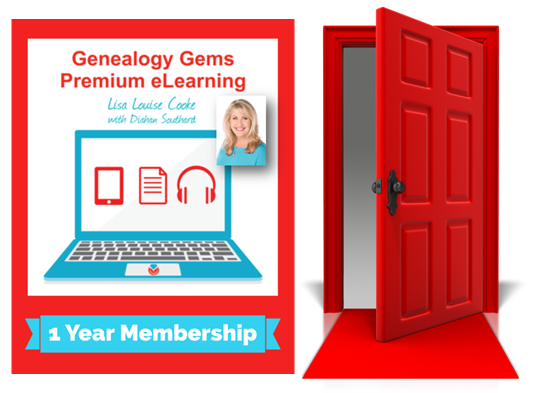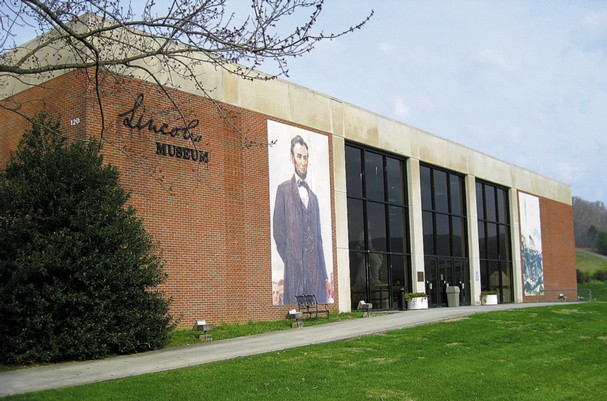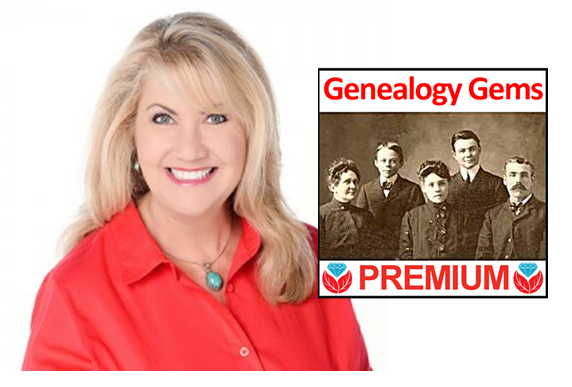Blog


The Story of Memorial Day
The history of Memorial Day–formerly Decoration Day–and what he will be doing to honor it are shared here by Military Minutes contributor Michael Strauss. We also give you quick links to more free family history articles on researching your ancestors who gave the ultimate sacrifice on the battlefield.
(Image right: Gravesite in Oak Woods Cemetery, Chicago, IL. Decoration Day, 1927. Photo: Chicago Daily News)
History of Memorial Day
In 1865, just after the close of the Civil War, a local druggist in Waterloo, New York suggested placing flowers on the graves of fallen soldiers in his community.
The following year, another area resident, General John B. Murray, led the small village in putting flags at half-mast and decorating the gravestones of soldiers buried in the town’s three cemeteries. They repeated their efforts the following year. Many other communities in both the North and South also honored their war dead during this time period.
General John A. “Black Jack” Logan spearheaded the idea of a national day of remembrance for fallen Civil War soldiers in 1868. Logan, a former Union General, was the National Commander of the Grand Army of the Republic (GAR), which constituted living veterans of the war. On May 5, 1868, the GAR issued General Order No. 11 to designate May 30, 1868 as the day to decorate and commemorate the graves of fallen comrades of the late Civil War.
The wording of the order is very specific: “Let us then at the time appointed gather around their sacred remains and garland them with choicest flowers of springtime…Let us raise above them the dear old flag they saved from dishonor…in this solemn presence renew our pledge to aid and assist those whom they have left among us…the soldier’s and sailor’s widow and orphan.” This order later became known as the “Memorial Day Order” and can be read on the website of the U.S. Department of Veteran Affairs as part of the National Cemetery Association.
On this date at Arlington National Cemetery, more than 20,000 gravestones of both Union and Confederate veterans were remembered. General James A. Garfield (who later became President of the United States) and other political leaders spoke to an audience of more than 5,000 persons. In following years, May 30th became known as Decoration Day, a national day of remembrance of the Civil War dead.

General John A. “Black Jack” Logan. Library of Congress image.
After the end of World War I in 1918, the scope of Decoration Day expanded to include all war dead since the Revolutionary War. The name gradually gave way to “Memorial Day,” a term first used in 1882 that didn’t become more generally accepted until after the end of World War II. A 1968 Act of the United States Congress, which went into effect in 1971, formally calendared the dates of several national holidays, including Labor Day, Veterans Day, and Memorial Day—the latter to be held in perpetuity on the last Monday in May. (Veterans Day, honoring all veterans who served rather than just our war dead, is held on November 11th.)
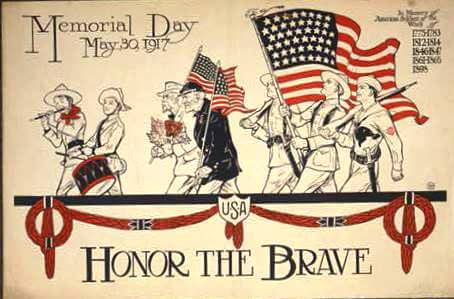
1917 poster, Library of Congress image.
Interestingly, not every part of the United States fully supported Decoration Day. The Civil War created divisions even in peacetime, long after the guns fell silent in 1865. A number of Southern states have over the years honored their own Confederate dead on specific dates. In Mississippi, for example, they remember Memorial Day the last Monday of April. Both North Carolina and South Carolina observe this date on May 10th. In Virginia, the last Monday of May is observed as with most of the country, but it is often called Confederate Memorial Day.
For a little more history (and some great historical re-enactment footage), enjoy this quick video.
How I will be honoring Memorial Day
Regardless of the name given this holiday, on Memorial Day here in Utah I will remember and honor those who sacrificed so much for our country by attending a free public event at Camp Floyd. I will be wearing my Civil War uniform with other members of the Utah Living History Association as we recreate and experience camp life; drill; and fire our period weapons to remember when the camp was occupied by the Union Army from 1858-1861. I am the second person in the left in this 2016 photo from the Utah Living History Association. We strive for historical accuracy in our representation of the men stationed at this camp in the years immediately preceding the Civil War. (With the start of the war, the camp was abandoned and the men stationed here moved back East to the fighting. Next to the museum at the camp sits a small rural cemetery to honor the burials of 85 men who died from 1857-1861 who were stationed at the camp while serving with the United States Army.)
Memorial Day isn’t just about remembering those soldiers who died in battle, but about honoring all veterans who have honored us with service. We give this honor—regardless of sectional differences—to those who lost their lives during both wartime and peacetime periods.
Explore and honor your own war dead
Michael Strauss contributes the Military Minutes segment on the free Genealogy Gems Podcast. Why not use his expert tips to trace the stories of those on your own family tree who served in the U.S. military?
Find your ancestors in the 5 branches of the U.S. military
Intro to US military terminology: regular, volunteer, or militiaman?
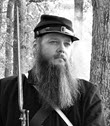
Author: Michael Strauss, AG
Michael Strauss, AG is the principal owner of Genealogy Research Network and an Accredited Genealogist since 1995. He is a native of Pennsylvania and a resident of Utah and has been an avid genealogist for more than 30 years. Strauss holds a BA in History and is a United States Coast Guard veteran.
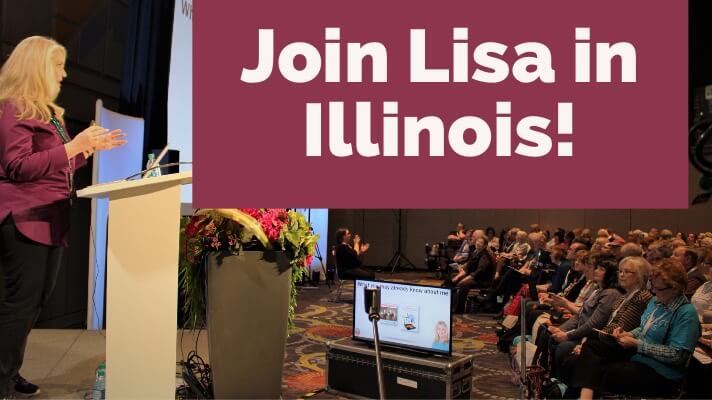
Join Lisa at GeneaQuest 2018 in Illinois
Lisa Louise Cooke will be at CAGGNI’s GeneaQuest 2018 in Hoffman Estates, Illinois on Saturday, June 23. Join her and other expert presenters all day to learn Google strategies for genealogy, a master plan for organizing your research, DNA solutions, brick-wall solutions and more!
The Computer Assisted Genealogy Group of Northern Illinois (CAGGNI) is welcoming Lisa Louise Cooke as a featured speaker at GeneaQuest 2018. This year’s annual event will be held at Northern Illinois University (NIU) Conference Center in Hoffman Estates, Illinois on Saturday, June 23, 2018 from 8:00 am – 4:00 pm.
The theme is Building Your Genealogy Skills, and a genealogy conference is a great place to do just that. In addition to nurturing your skills in the area of analysis, genetics, geography, organization, problem-solving, research and technology, GeneaQuest offers you an opportunity to come shoulder to shoulder with genealogist’s who share your passion for climbing the family tree.
More on GeneaQuest 2018
Who: Lisa Louise Cooke and other expert presenters
What: GeneaQuest 2018
Where: Northern Illinois University Conference Center, Hoffman Estates, IL
When: Saturday, June 23, 2018, 8:00 am – 4:00 pm
Cost: Register online by May 31 for $60 ($55 for CAGGNI members) or $70 after June 1; registration includes buffet lunch (if you register by June 12). Extra fee for labs.
Event Host: Computer Assisted Genealogy Group of Northern Illinois
Lisa will kick off the day with the brush-up-on-Google presentation every genealogist needs, “Update Google! What’s New.” She’ll tell you what you need to know about how Google is evolving and changing. Then she will unleash some advanced Google search strategies for genealogy that you can put into practice right away to get the best results from your online searches.
She will also be teaching these powerful family history classes:
- Create a Free Google Earth Map Collection for Your Research. Come to this session and you’ll walk out with potentially thousands of free historic maps organized for your family history research. And the good news is, you don’t need a lot of tech know-how to do it! You’ll learn how to find free digital maps for your ancestral locations, add them as permanent map overlays to Google Earth and then organize them into your personal map reference collection. Lisa will also cover best practices for keeping them organized so that they continually enrich your research.
- Genealogy On the Go With Mobile Devices. Tablets and smartphones are built for hitting the road and are ideally suited for genealogy due to their sleek size, gorgeous graphics and myriad of apps and tools. In this class, you will discover the top apps and best practices that will make your mobile device a genealogical powerhouse! (iOS and Android.)
- How to Organize All This Genealogy Stuff. Save yourself future frustration and disappointment by putting a solid genealogy organizational plan in place for all the types of items that will be coming your way. Lisa will share with you the systems she personally uses that have proven to be reliable and efficient. She will cover systems for four types of stuff: paper and physical items; digital files; family tree data and all that information you’ve discovered online and need to put somewhere.
Other topics for the day also promise to be fabulous. There will DNA labs for AncestryDNA and GEDmatch, strategies for finding the most elusive ancestors (including DNA strategies), finding female ancestors, and introductory presentations on the free websites, WikiTree and Find A Grave. Click here for a detailed schedule of the day’s event and registration information.
Learn Virtually: Genealogy Gems Premium eLearning
Can’t make it to GeneaQuest 2018? You do have another learning option. Genealogy Gems Premium eLearning gives you access to video versions of Lisa Louise Cooke’s top classes for a full year! Think Google, Google Earth, organizing your genealogy, Evernote, using the cloud for genealogy, mobile research strategies, methodology and more than 20 classes from Your DNA Guide Diahan Southard on getting the most out of your DNA testing. You’ll need that full year to get through more than 50 video classes as well as all episodes of the Genealogy Gems Premium Podcast! Click here to see how Premium eLearning can help you open new doors in your genealogy research.

About the Author: Sunny Morton
Sunny is a Contributing Editor at Lisa Louise Cooke’s Genealogy Gems; her voice is often heard on the Genealogy Gems Podcast and Premium Podcasts. She’s known for her expertise on the world’s biggest family history websites (she’s the author of Genealogy Giants: Comparing the 4 Major Websites); writing personal and family histories (she also wrote Story of My Life: A Workbook for Preserving Your Legacy); and sharing her favorite reads for the Genealogy Gems Book Club.

Why You Should Look for Archives in Museums
Did you know that some museums also house archives? Yes, that’s right! Museums aren’t just for artifacts and historical objects. They sometimes house documents, photographs, and ephemera. Here’s how to learn about archives at your favorite museums (big or small) and how to gain access to archival material that may reveal your family history.
Many genealogists don’t know that many of our wonderful museums have both a “front room” and a “back room.” The front room is filled with displays and exhibits that we all love to walk through and see. There could be multiple rooms filled with artifacts on display in glass cases for the visitor to enjoy. But the back room is where the archived records are located. This back room is not seen by the public but most of the time, it is there. There are shelves filled with historical and genealogical records that the genealogist shouldn’t miss out on.
For instance, at the Lincoln Memorial University Museum in Harrogate, Tennessee, they have the second largest collection of Abraham Lincoln artifacts and memorabilia in the United States in their museum. They also have a back room filled with historical and genealogical records that genealogists can access for genealogy research!
A fantastic find in a museum archive
Genealogy Gems Contributing Editor Sunny Morton shares this example of a family history treasure found buried in a museum’s archive:
“My mom Cheryl McClellan (a professional genealogy librarian who was interviewed by Lisa Louise Cooke in the Genealogy Gems Premium Podcast episode #125), visited the Steelworks Center of the West in Pueblo, Colorado with her siblings to get a better sense of the industry that employed her family there.
Imagine her glee when she discovered that the museum has an archive! According to its website, the collections include ‘over 100,000 photographs, more than 150 films, 30,000 maps and drawings, hundreds of ledgers, and internal publications such as Camp and Plant, The Industrial Bulletin, and The Blast. These are in addition to the core collection of approximately 6,000 cubic feet of records documenting CF&I’s steel production, iron and coal mining, geological records, labor relations, land and water resources, employee records, invoices and work orders, executive memoranda, correspondence, and much more, documenting every aspect of the company’s rich history.’
Unfortunately, my mom didn’t have time to stay and explore the archive in-depth. But she started corresponding with the archivist, who sent her priceless documents relating to her grandfather, John Felix. Among these was a copy of his original application for employment, his employee service record and a clipping from an employee newsletter about his exploits as a fisherman:
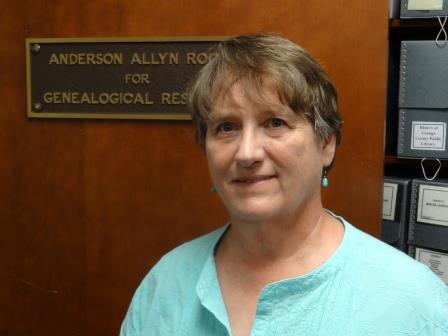
Sunny’s Mom: Cheryl McClellan,
Professional Genealogy Librarian
How to find museums with archives
You can look for museums with archives in them in a few different ways:
- When visiting a local museum, ask the curator or museum director if they have any records available for research in their collections.
- Go to the websites of museums–especially historical museums–you may have visited in the past. See whether they mention having an archive or research room.
- Google the name of your ancestor’s town (or a bigger city nearby), along with the state name, and add the search term museum.
- Contact a librarian, archivist, or the Chamber of Commerce in your ancestor’s town.
- Use the free website, ArchiveGrid, to locate archival collections at museums. On the home page, you’ll find a map that looks something like this:
Use the map view to identify archival collections, some of which may be housed in museums, near your ancestors’ home. Hover over the red markers to see the names of institutions. Click on them to find contact information and search their collections. Once you have located the museum, contact them by phone or email and ask them about their archived records. If you can’t visit in person–or you can’t stay long enough to really search their collections–start corresponding with the archivist, as Sunny’s mom did. You may need to be patient: many archivists only work part-time and stay quite busy. But your patience may be rewarded beautifully!
As genealogists, we will search anywhere and everywhere for records about our ancestors to help tell their life story: archives, libraries, historical societies, genealogical societies, and museums! So, the next time you travel to where your ancestors came from, check and see if there is a museum. If there is one, stop by and ask if they have a “back room” with archived records. You just might be pleasantly surprised.
The Archive Lady Melissa Barker appears regularly on the Genealogy Gems Premium Podcast, available to Genealogy Gems Premium eLearning members. Internationally-renowned genealogy educator and podcast pioneer Lisa Louise Cooke hosts and produces the Premium Podcast, weaving together inspiring stories, research strategies and exclusive interviews. (You can also check out the free monthly Genealogy Gems Podcast, with over 2.5 million downloads worldwide and plenty of inspiration and information that can help your family history research.)

About the Author: Melissa Barker
Melissa is a Certified Archives Records Manager, the Houston County, Tennessee Archivist and author of the popular blog A Genealogist in the Archives and an advice columnist. She has been researching her own family history for the past 27 years.





